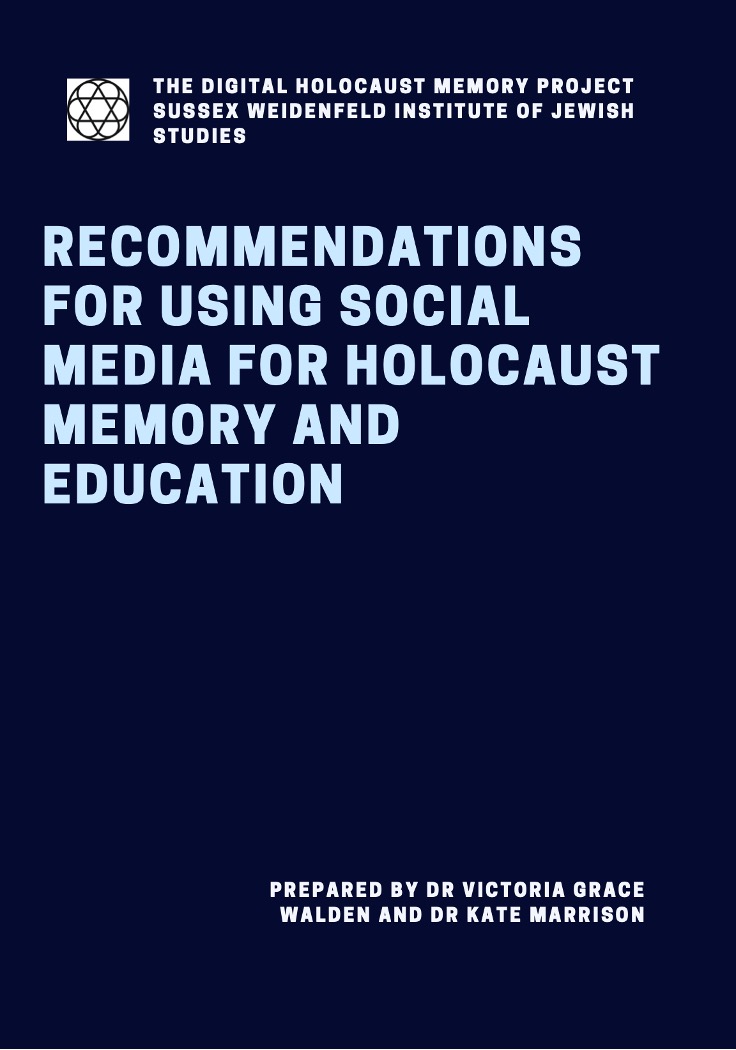
Recommendations for using Social Media for Holocaust Memory and Education
The recommendation reports, published as part of the Digital Holocaust Memory Project, underpin the objectives of the Landecker Digital Memory Lab. Their findings feed into all of the work that we now do.
Forward
The social media landscape is ever-changing as is its relationship to Holocaust memory and education. In the earlier days of Facebook and Twitter’s dominance, there was a clear divide of opinions in the Holocaust sector. On one hand, some institutions were early adopters (notably the Auschwitz State Museum) and others experimented with the affordances of these platforms such as the team at Grodzka Gate, Lublin extending the analogue practice of school pupils sending letters to child Holocaust victim Henio Zytomirski onto Facebook and the United States Holocaust Memorial Museum’s ‘tweet-up’ hybrid architecture tour. On the other hand, expressions of hesitance about these participatory spaces informed the need for the International Holocaust Remembrance Alliance’s Education Working Group to establish guidelines for using social media in this context (2014).
As practice grew, it also became somewhat formalised with most organisations predominantly focusing on Twitter, Facebook and Instagram for public engagement work, and most content presenting traditional curation of historical sources with additional narrative, promoting the organisation’s offline (or elsewhere online) work, or behind the scenes access to curator and educator experiences. Whilst, one of the
celebrated potentials about social media is their ability to help organisations to reach wider (global) audiences, little has changed online since Eva Pfanzelter’s (2014) claim that the Holocaust institutions that dominated previously offline, also dominate on social media platforms. Few others attract much engagement with their posts.
TikTok has brought both new opportunities and challenges for the Holocaust sector – organisations and individuals who have taken to creating content on the platform are seeing far greater engagement than they had on previous ones. Yet, TikTok is also one of the most data-invasive and opaque platforms regarding researcher access. Many also encounter far more Holocaust denial, distortion and trivialisation on this platform. However, the social media landscape is also far larger than the Holocaust sector has really acknowledged and much of the coded hate content that appears on mainstream platforms has been cultivated at scale on others, from 8Chan to Telegram, and gaming and VR social spaces. It is imperative therefore that we bring together a wide range of stakeholders and experts to discuss what the sector needs to move forward with its work on social media. If Holocaust memory and education is to remain visible in the ever-expanding digital world, then it must be visible across a variety of digital spaces.
This report serves as an important first step in this work. It was created as part of the research project ‘Participatory Workshops – Co-Designing Standards for Digital Interventions in Holocaust Memory and Education’, which is one thread of the larger Digital Holocaust Memory Project at the University of Sussex.
The participatory workshops project have focused on six themes, each of which brought together a different range of expertise to discuss current challenges and consider possible recommendations for the future. The themes were:
- AI and machine learning
- Digitising material evidence
- Recording, recirculating and remixing testimony
- Social media
- Virtual memoryscapes
- Computer games
Download the full report below: